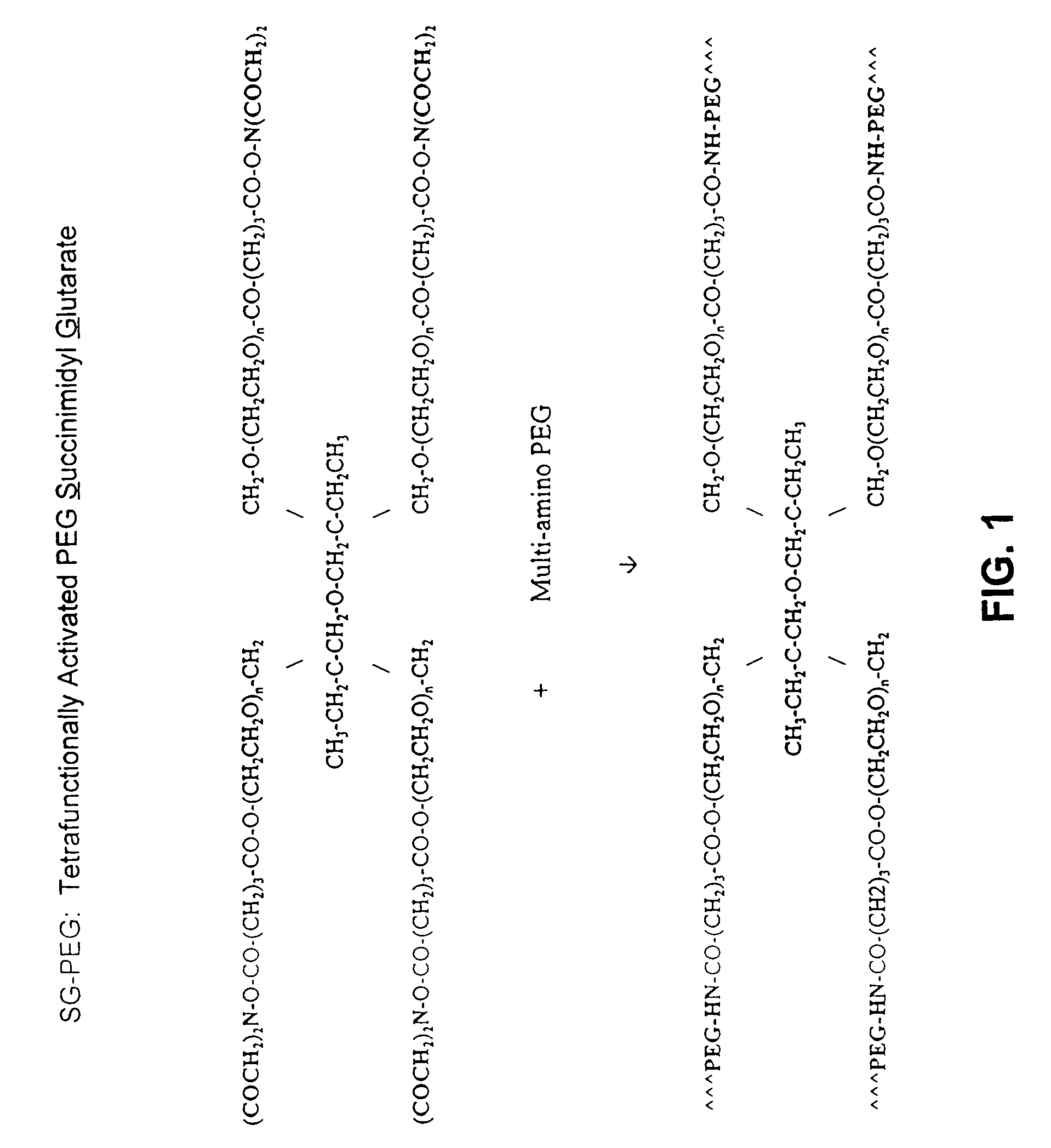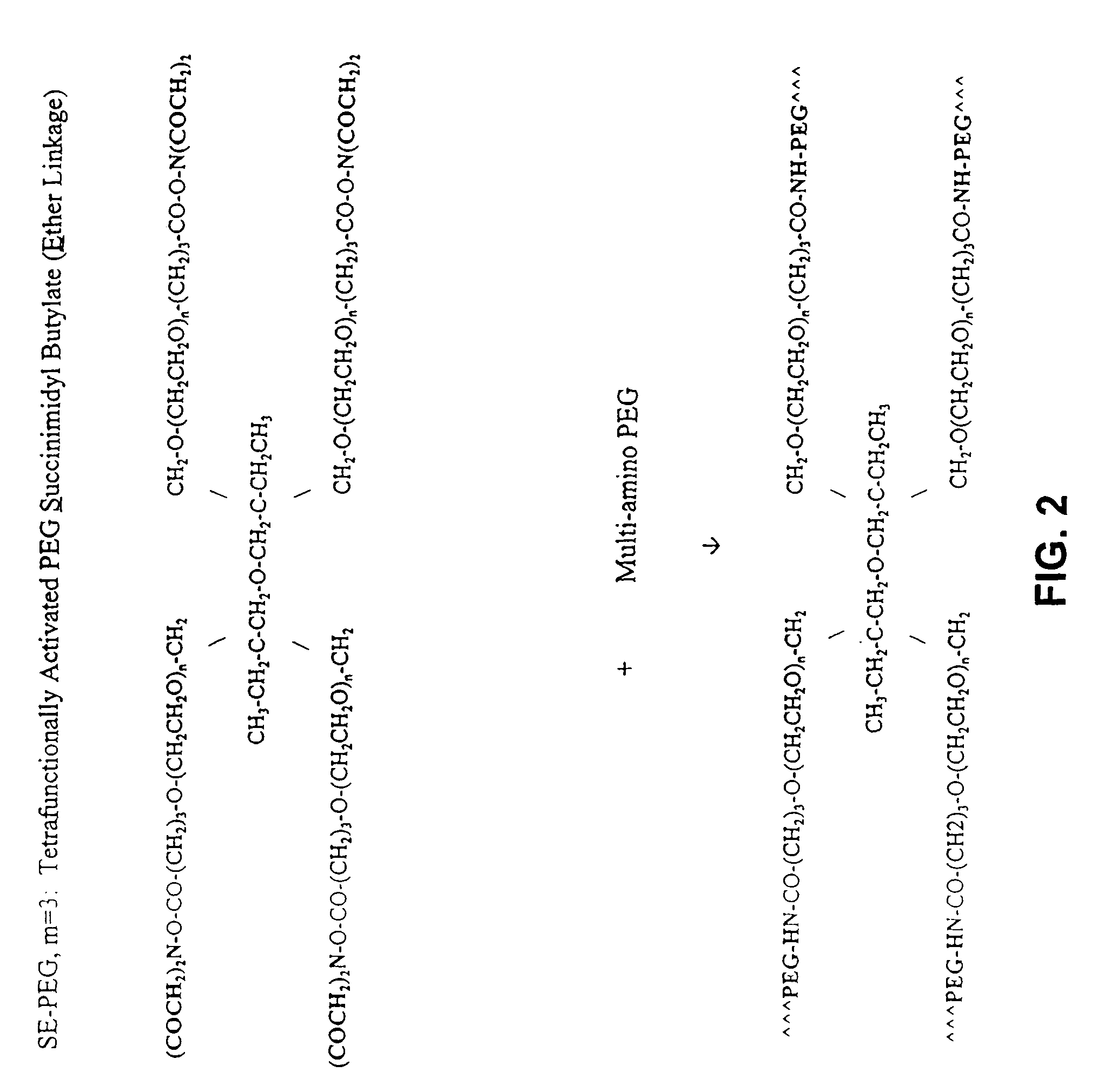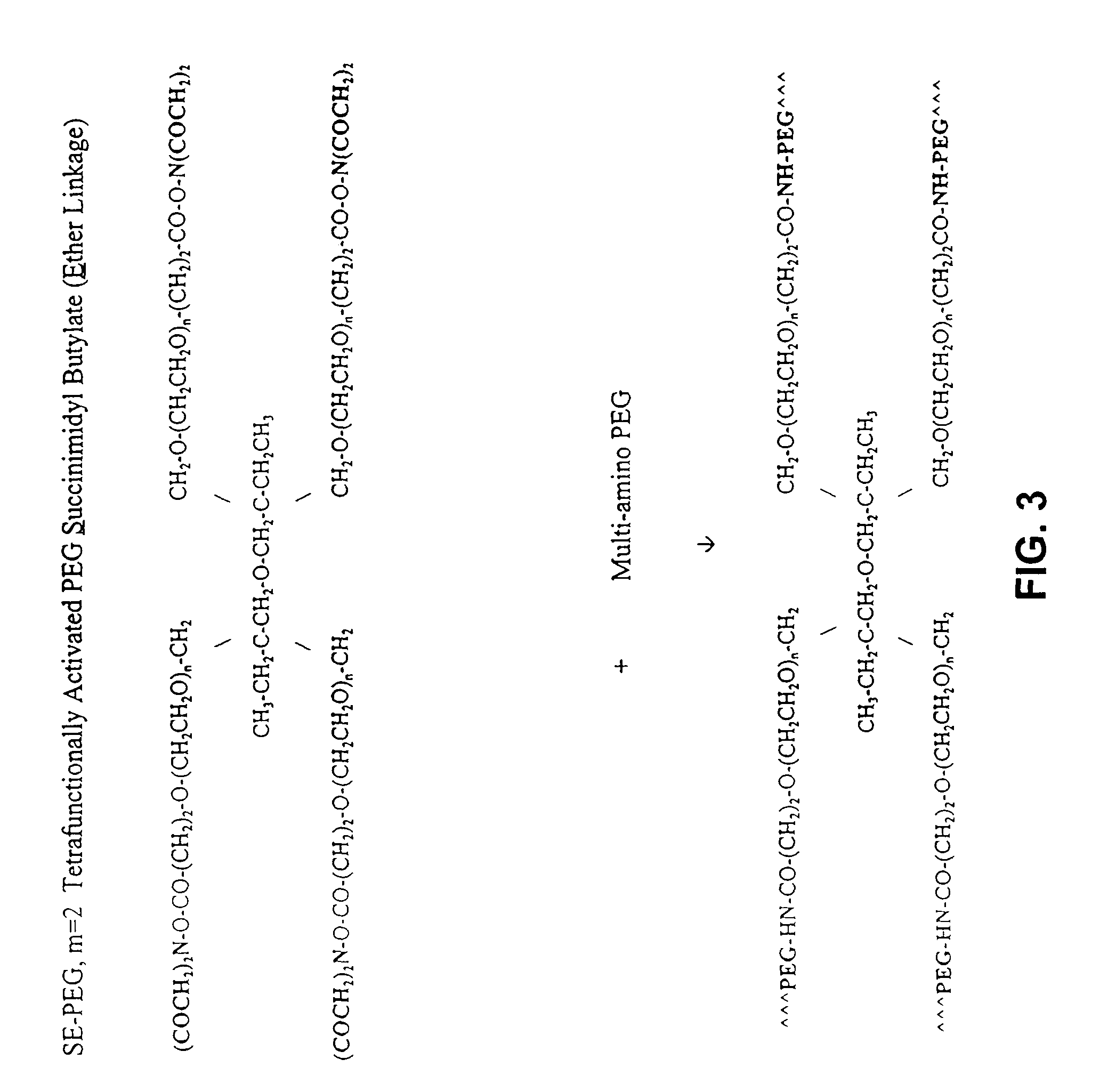Compositions and systems for forming crosslinked biomaterials and methods of preparation of use
a biomaterial and composition technology, applied in the field of compositions and systems for forming crosslinked biomaterials, can solve the problems of tissue damage, protruding tissue strangulation, tear, or bulge,
- Summary
- Abstract
- Description
- Claims
- Application Information
AI Technical Summary
Benefits of technology
Problems solved by technology
Method used
Image
Examples
example 1
Comparative Peel and Lap Shear Testing
[0198]In vitro peel and lap shear tests were conducted to demonstrate the utility of the claimed adhesive materials for hernia repair applications. Adhesive materials were applied on a 2 cm×2 cm area to glue two surfaces together. The glued surfaces were incubated in phosphate buffered saline (PBS) at 37° C. for 2 hrs, then the peel strength and lap shear strength were measured on Instron Universal Tester, Model 4202, Canton Mass.
[0199]MaterialsS:
[0200]The adhesive compositions were tested on the following materials:
[0201]Polypropylene mesh—Lab grade and BARD® Mesh (Davol, Inc. Cranston, R.I.);
[0202]Collagen membrane—Collagen sausage casing #1, 2, and 3 (The SausageMaker, Inc., Buffalo, N.Y.); and
[0203]Cowhide strip—fresh cowhide strip (Spear Products, Inc., Quakertown, Pa.).
[0204]The adhesive compositions were prepared as follows:
[0205]Composition A
[0206]Component I (Mixed in a Syringe):
[0207]100 mg pentaerythritol polyethylene glycol ether tet...
example 2
Comparative Peel Strength in 2×2 cm Polypropylene Mesh / Collagen Membrane Testing
[0222]The surface characteristics of the materials used in the test model require standardization to give consistent results. Four types of collagen membrane surfaces gave different peel strength results with lab grade polypropylene mesh for the same COMPOSITION A formulation. The data are shown in FIG. 11. The affixed mesh / collagen membranes were incubated for 2 hours at 37° C. in PBS.
example 3
Comparative Peel Strength in 2×2 cm Polypropylene Mesh / Collagen Membrane Testing
[0223]The peel strength for the various adhesives when used to adhere lab grade polypropylene mesh to a collagen membrane surface was determined. The amount of force required to peel the lab grade polypropylene mesh off of the membrane surface glued by different materials after incubation in PBS for 2 hrs at 37° C. varied from zero to ˜0.35 N / cm linear widths. COMPOSITION A and COMPOSITION B gave the same peel strength as KRAZY GLUE® and DEREMABOND®, cyanoacrylate products. TISSEEL® gave lower peel strength, <0.1 N / cm lineal width. The data are shown in FIG. 12.
PUM
| Property | Measurement | Unit |
|---|---|---|
| partition coefficient | aaaaa | aaaaa |
| weight | aaaaa | aaaaa |
| concentrations | aaaaa | aaaaa |
Abstract
Description
Claims
Application Information
 Login to View More
Login to View More - R&D
- Intellectual Property
- Life Sciences
- Materials
- Tech Scout
- Unparalleled Data Quality
- Higher Quality Content
- 60% Fewer Hallucinations
Browse by: Latest US Patents, China's latest patents, Technical Efficacy Thesaurus, Application Domain, Technology Topic, Popular Technical Reports.
© 2025 PatSnap. All rights reserved.Legal|Privacy policy|Modern Slavery Act Transparency Statement|Sitemap|About US| Contact US: help@patsnap.com



